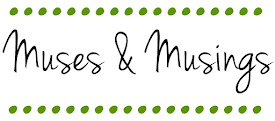Seriously.
Hugs & Kisses!!
In this edition of Amy Mac’s Wonderful World of Writing Well, let’s cover an easy way to trim unnecessary fat from your writing.
Amy Mac’s Wonderful World of Writing Well Rule # 3:
Eliminate the word “that” wherever possible.
When I’m editing a document, one of the first things I do is eliminate the word “that” wherever possible. How do you know if you need the word that (or not)? Try reading the sentence without the "that.” If it makes sense without, drop it.
An example:
The teacher was making sure that the students understood that it was against the rules to talk during the assembly.
Now, try again leaving out the “thats.”
The teacher was making sure the students understood it was against the rules to talk during the assembly.
The meaning doesn’t change when we eliminate “that,” so we’ll leave it out.
Don’t you just love it when you trim a little fat without increasing your cardio? Me, too.
Amy Mac's Wonderful World of Writing Well Rule # 2:
Don't use big, fancy words when simple, plain words will do.
When writing, aim for a sixth grade reading level. Even if you are writing for a well-educated audience, stick with small, plain words. Why?
Readers trip over long words, even when they know the definition. Bigger isn’t always better, and using a protracted word often breaks up the flow of writing.
See, didn’t you think “Protracted? Seriously?”
The sentence works just as well with “lengthy.” Don’t give your reader an excuse to stop reading by using a hefty word in a (transparent) display of your vocabulary chops.
William Strunk Jr. & E.B White, in their famous writing style manual Elements of Style, say it best:
“Avoid the elaborate, the pretentious, the coy, and the cute. Do not be tempted by a twenty-dollar word when there is a ten-center handy, ready and able.”
And that, my friends, is the last declaration, utterance, remark.
Or word.
PS - Ten points to anyone who can identify where "Word to Your Mother" comes from.
As of today, I’ll be running a regular feature on the Amy Mac blog which aims at improving basic writing skills around the world. Heck, let’s go big and say around the solar system. If we are attacked by Martians, we’ll find it helpful if their “take us to your leader” note is well-written and succinct.
Let’s start with the exclamation point, a woefully overused punctuation mark. I blame email for the overuse of the exclamation point. It is difficult to convey emotion and intention in this brief and slightly informal method of communication, so we lean heavily on the exclamation point to show we’re happy, excited, frustrated, or to ease the tone of a negative message.
Unfortunately, this practice has trickled into other communications platforms including web sites, annual reports, marketing collateral and letters which deserve more gravity than 15 exclamation marks can possibly provide.
Amy Mac’s Wonderful World of Writing Well Rule #1:
A little less exclamation -- a few more action words, please.
In other words: convey your emotion with a descriptive action word (or two) and put a period at the end of the sentence.
Imagine you are writing a letter to a potential customer to extol the virtues of your business over a competitor's. If you write:
“We are the best dog biscuit bakers in town, and we know you’ll agree!”
you sound a bit like an already peppy cheerleader who combined a Red Bull and three shots of espresso in her coffee to ill effect.
On the other hand, if you write:
“Doggone Good Biscuit Bakers bakes our dog treats daily, fetching the freshest ingredients available to ensure a scrumptious snack for man’s best friend. Our roster of satisfied, loyal customers (human and canine) will assure you we are the best dog biscuitbakers in town.”
Not an exclamation point in sight, but a much more convincing pitch.
I’m not suggesting you eliminate exclamation points from your writing completely – but remember, they have a place … and it isn’t at the end of every single sentence. Use them sparingly and you’ll find your communications are taken more seriously.
Now, who can point out the reference to Elvis Presley in this post? C’mon, put on your thinking caps …. I know you can do it! (see, that's the only exclamation point in this whole post, and you didn't mind at all, did you?)
Don't forget to leave a comment on this post for a chance to win a $25 gift certificate to www.amazon.com




